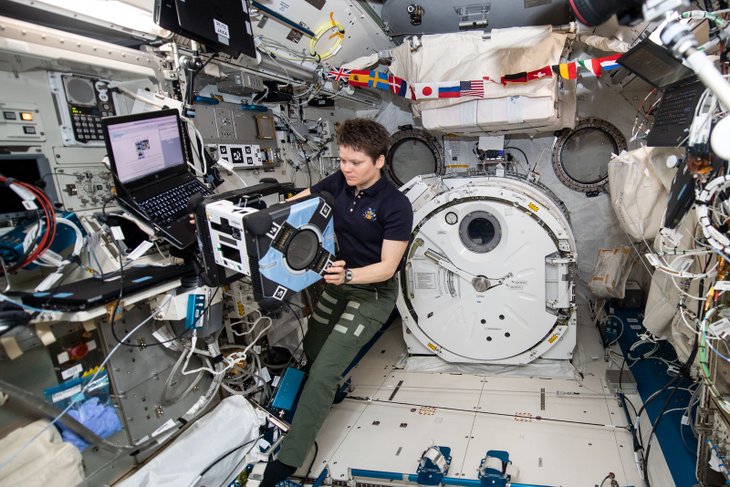NASA Astronaut Robot Assistant Flew Into Space For The First Time
Indira Datta - Jul 01, 2019

Bumble, the cube-shaped robot made a jump in space by its own power. It is one of the Astrobee robots developed by NASA to assist astronauts.
- Cafe In Tokyo With Robot Waiters Controlled By Disabled Staff
- Russia Will Build A Lunar Space Station With China Because It's Done With NASA
- NASA Reveals 20 Most Stunning Earth Images Taken From The ISS
Bumble, the cube-shaped robot made a jump in space by its own power. It is one of the Astrobee robots - a free-flight robot system developed by NASA to assist astronauts on the International Space Station. Astrobee robots can move in all directions and turn on any axis in space. Bumble is the first robot to fly into space and operate independently, although it can be managed by astronauts and flight controllers.

Bumble basically flew one step forward and rotates a bit to fly in the ISS. NASA’s scientists have designed important basic operations to ensure Bumble's engine system is operated and adjusted accurately. The main goal of these robots is to take autonomous actions, do basic maintenance work, and support human astronauts’ experiments. So scientists need to make sure it can function exactly as planned so that it can be put to work freely with human astronauts on the space station.

Besides Bumble, there is also a second Astrobee called Honey, which was also launched to the space station in April. If everything goes as planned, Queen is the Astrobee robot that is expected to be released in July this year to carry out the next resupply mission. On every Astrobee, there are cameras to navigate and record the experiments of human astronauts. They can also network to move equipment around the space station. Each robot has a small perching arm to hold objects and transport them. The robot will stop at a companion station to charge when needed.

There is a lot of work that needs to move around the International Space Station to conduct research and experiment in space. The 1-foot cubed robots developed by NASA will be an effective support for human astronauts. Astronauts will focus more on jobs that only humans can do and handle. This helps research projects be pushed ahead and completed faster.
Featured Stories

Features - Jan 23, 2024
5 Apps Every Creative Artist Should Know About

Features - Jan 22, 2024
Bet365 India Review - Choosing the Right Platform for Online Betting

Features - Aug 15, 2023
Online Casinos as a Business Opportunity in India

Features - Aug 03, 2023
The Impact of Social Media on Online Sports Betting

Features - Jul 10, 2023
5 Most Richest Esports Players of All Time

Features - Jun 07, 2023
Is it safe to use a debit card for online gambling?

Features - May 20, 2023
Everything You Need to Know About the Wisconsin Car Bill of Sale

Features - Apr 27, 2023
How to Take Advantage of Guarantee Cashback in Online Bets

Features - Mar 08, 2023
White Label Solutions for Forex

Review - Jul 15, 2022
Comments
Sort by Newest | Popular